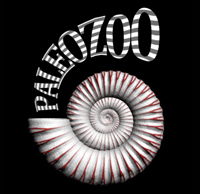Acanthostega gunnari is an extinct Devonian stem-tetrapod (~365 Mya) which grew up to 600mm long.
Skull fragments of Acanthostega were first discovered in 1952 by Erik Jarvik, however the greater part of its skeleton was not unearthed and re-evaluated until 1987 by Jennifer Clack.
Acanthostega is regarded as an important example of a transitional organism - displaying both fish and land tetrapod morphology - illustrating how vertebrate anatomy evolved over time.
Acanthostega's fish-like features include a deep, ray-finned tail and bony gill arches. Tetrapod features include well developed pelvic and pectoral girdles and four limbs ending in digits (up to eight per limb) - the earliest creature to display this morphology.
While Acanthostega may look like a land tetrapod, closer examination showed that it had poorly developed wrist and ankle joints and a weak ribcage - meaning that it probably couldn't support its own body weight on land. Therefore it is thought that Acanthostega lived among the reedy, higher water margins, spending most of its life underwater. Importantly this suggests that digits initially evolved within a water environment rather than following on from the vertebrate move onto land (Coates, Clack, 1990).
With a flattened head, large upward looking eyes and sharp teeth, Acanthostega was probably a sub-surface water predator, able to grapple its way about weedy margins feeding on arthropods and invertebrates.
